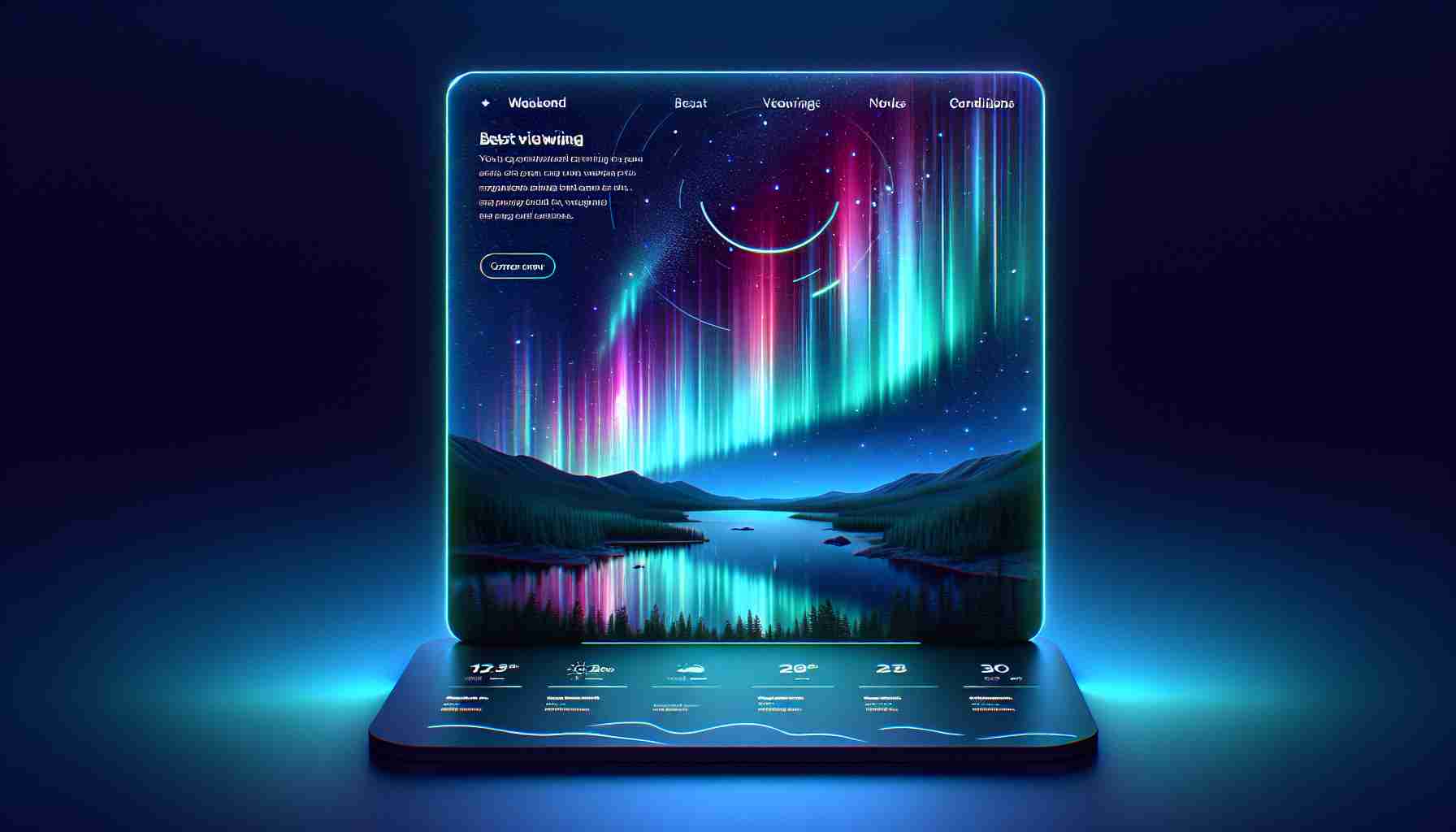- The aurora borealis, or northern lights, will be visible across northern U.S. states this Sunday evening.
- A Kp index of five indicates increased auroral activity and wider visibility.
- Prime viewing locations include Alaska and also states like Idaho, Minnesota, Montana, North Dakota, and Washington.
- The viewing conditions are favorable into Monday, with a Kp index of four.
- Best viewing times are between 10 p.m. and 2 a.m. in dark, elevated locations.
- Photographers should use a tripod, wide-angle lens, and turn off flash, utilizing night mode for optimal shots.
Prepare for a stellar show in the skies! This Sunday evening, lucky stargazers across more than a dozen northern U.S. states might be treated to a breathtaking display of the aurora borealis. The National Oceanic and Atmospheric Administration (NOAA) has announced that the northern lights will shine brighter than usual, with a Kp index of five—on a scale of nine—indicating more activity and a wider visibility range.
If you’re in Alaska, you’re in the prime spot to witness this cosmic spectacle. However, don’t fret if you’re in states like Idaho, Minnesota, Montana, North Dakota, and Washington; you’ll also have a great chance to catch this magical light show dancing across the night sky. As the lights have been especially vivid in recent months due to a prolonged solar cycle, conditions for viewing remain promising into Monday with a Kp index of four.
To get the most from this enchanting experience, plan to head outside between 10 p.m. and 2 a.m. Find a picturesque spot free from city lights and higher up, ideally on a hilltop. For photographers eager to capture the moment, a steady tripod and a wide-angle lens will be your best friends. Don’t forget to disable the flash and use night mode on your smartphone for those captivating snapshots.
As the aurora borealis continues to dazzle through the coming years, this weekend’s display is not one to miss. Bundle up, head out, and immerse yourself in the natural wonder of the universe!
Don’t Miss the Celestial Dance: Aurora Borealis Viewing Guide
Overview
The aurora borealis, or northern lights, is a captivating natural phenomenon caused by the interaction of solar wind with Earth’s magnetosphere. This weekend promises an exceptional show for stargazers in the northern U.S., thanks to a higher-than-usual Kp index, signaling increased geomagnetic activity.
New Insights and Trends
– Viewing Conditions: Beyond just timing, the lunar phase also plays a crucial role. A new moon can enhance visibility due to reduced light interference from moonlight. This weekend features minimal lunar brightness, thus making it an ideal time for viewing.
– Technological Innovations: Apps and websites that focus on aurora forecasts, like the NOAA’s Space Weather Prediction Center, now provide real-time alerts and tips for optimal viewing conditions tailored to your location.
– Increased Interest: Participation in aurora-related activities is surging. This includes guided tours in regions of high auroral activity, such as Fairbanks, Alaska, and innovative photography workshops focused on capturing the northern lights.
Questions about Aurora Borealis
1. What factors influence aurora visibility?
The visibility of the aurora borealis is influenced by several factors, including solar activity levels, Kp index ratings, local light pollution, geographic location, and weather conditions like cloud cover.
2. How can I improve my chances of witnessing the northern lights?
To improve your chances, find a location far from city lights, check aurora forecasts regularly, monitor the weather for clear skies, and plan your viewing during peak hours when geomagnetic activity is forecasted to be at its highest.
3. Are there any risks associated with viewing the aurora?
While viewing the aurora is safe, the outdoor environment poses risks such as freezing temperatures and potential wildlife encounters. It’s essential to dress warmly, inform someone of your location, and be aware of your surroundings.
Additional Tips for Viewing
– Optimal Locations: States like Alaska, North Dakota, and Montana are prime viewing locations, but clear skies in areas as far south as northern Washington and Minnesota also provide opportunities.
– Photography Techniques: For photographers, utilize ISO settings around 800-1600, long exposure times, and steady support to capture the vibrant colors and movements of the aurora.
Suggested Resources
For more information about aurora forecasts and viewing tips, check out these useful links:
– NOAA
– Space Weather
Prepare yourself, gather your friends or family, and enjoy one of nature’s most magical displays this weekend!
